 EMONDAGESTGERMAIN.COM
EMONDAGESTGERMAIN.COM There are many kind of pruning which vary according to the specific need of the tree or the owners requirements:
Hazard pruning: consists in removing dead or ill branches, cutting the stubs¹, removing branches rubbing together (wearing and tearing of the bark).
Thinning: completed by removing 15 to 30% of the leafy mass (branches and leaves as a whole) which minimizes potential breaking by offering less hold to wind and ice storm. This thinning also allows more light to make its way through to the ground, resulting in a better balance between shade and sun exposure.
Crown raising: raising the crown of a tree is instrumental in increasing indirect light under it. It is done by removing low branches from the trunk and shortening branches growing towards the ground, all around the boughs. It is important not to cut big branches to the trunk; large wounds almost never heal and allow decay to make holes in the trunk, thus weakening the structure of the tree over time.
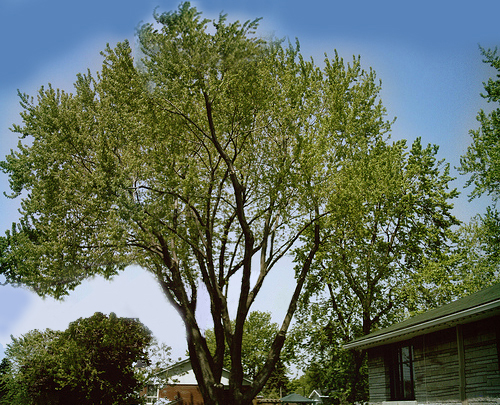 Maple tree pruned to balance the ratio shade-sun exposure.
Maple tree pruned to balance the ratio shade-sun exposure.
Clearance pruning: Mostly used to satisfy the owner’s needs or those of a complaining neighbour by clearing infrastructures neighbouring the tree: house, clothes-line, wire, etc.
Topping: Cutting the top of a tree is to be adopted as a last resort. We rarely use it and especially in very definite circumstances when all other avenues have been explored, for it reduce the life expectancy of the tree. On the other hand, topping is used for some fruit-trees.
Pruning consisting in clearing the electrical networks interfering with vegetation. This clearing is paramount to ensure continuity of service, particularly during periods of strong winds or ice storm *.
We agree upon that network pruning is not of perfect aestheticism. It’s the ‘policy of choosing for the lesser of two evils’ for which we came to after years of experiments in collaboration with arborists, forest engineers, local intervenients and vegetation control specialists at Hydro-Québec. In return, every cut is done according to the acknowledged rules and principles of the ‘sap-drawer’². This clearance pruning doesn’t affect in anyway the survival of the trees. It is done this way almost everywhere in the world. (See burying wires ³).
Network pruning has to be done by arborists authorised by Hydro-Quebec because most of the time they work close to a ‘live’ electric network of 14 400 or 25 000 volts!
 Perfect technical control is crucial.
Perfect technical control is crucial.
* Don’t take any chance. When in doubt, contact Hydro-Quebec.
Consist in removing a tree in the most secure way possible. Felling a tree is often the last solution, when pruning cannot resolve the problems. It is the case with dead trees where the felling has to be performed in the following months for when the tree is too dry and risky for an arborist to climb it, we have to use cranes to dismantle it (when not accessible to the aerial bucket truck), multiplying costs of operation.
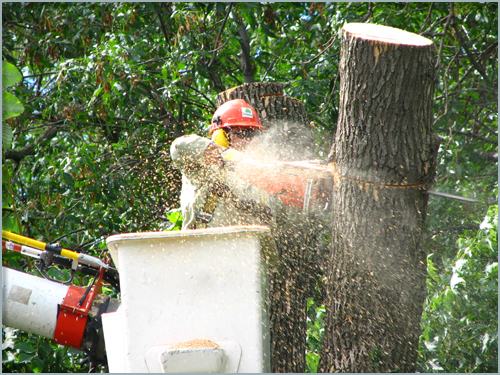 Personal protective equipments is a must.
Personal protective equipments is a must.
The felling of a tree may be required for other reasons: sick tree (to prevent propagation of incurable diseases), hazardous tree (trunk decay), construction, selective felling (too many trees in the same area), etc.
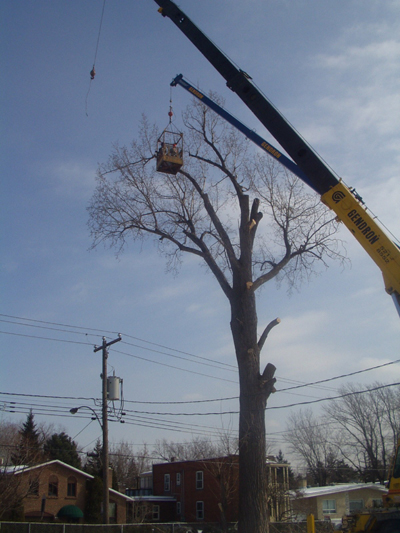 The use of cranes is sometimes needed.
The use of cranes is sometimes needed.
For most municipalities, a permit is required to cut down a more than 10 cm diameter tree (measured at chest height).
Mechanically allows the removal of the visible part of the stump (trunk and the visible surface roots). The device used for this purpose has a rotating wheel with carbide teeth that grinds the stump under the ground level. The roots left underground rot naturally after a while.
 An ecological way in removing a stump.
An ecological way in removing a stump.
A space of 91cm (36 inches) is necessary to allow passage for our smaller stump grinder device (ex.: gate of a fence).
Allows making a tree less hazardous during bad weathers by setting up guy-wires between trunks or branches (ex.: heavy horizontal branches, cracked forks, etc.). On the other hand, steel shafts must transpierce the trunks or the branches thus creating an entrance for rot. Never circle a branch with a wire because it will compress the sapwood and hinder sap flow. We guy wire trees only as a last resort.
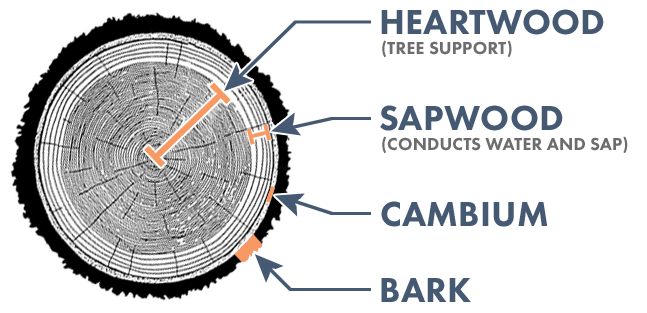
¹Stubs: Trunk or branch stubs, caused by breaking, which has to be removed as close as possible to a living part of the tree,so the bark will be able to cover the wound and thus prevent decay.

²Sap-drawer: The sap-drawer principle consists in always doing the cuts right after a secondary stem. It allows the sap to be drawn to the cut and the bottom of the stem so it doesn’t dry. It also prevents a strong stimulation for the tree in growing new stems where the cut has been done.
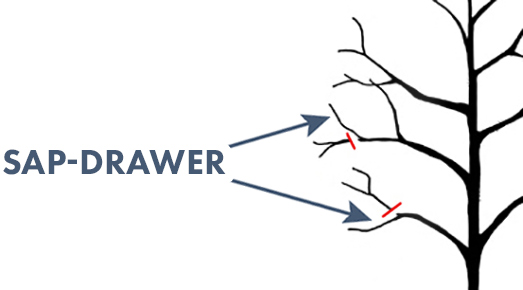
³Burying wires: At first sight, buried wires seems an enticing solution; no contact with vegetation, under the lee of bad weather, no post or wires disfiguring the landscape, etc. But this solution implies serious defects: wires burying is very expansive (especially in districts with low population density) and electrical outfit life expectancy is reduced underground because of constant attacks from water and humidity. Maintenance of an underground network is the most expansive. Profitable downtown, its large-scale establishment would involve prohibitive prices that would sooner or later reflect on electricity fares.
